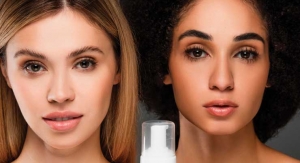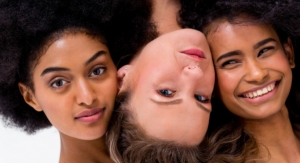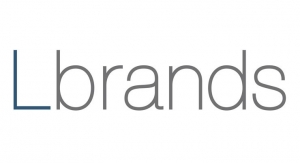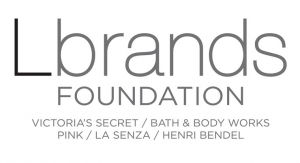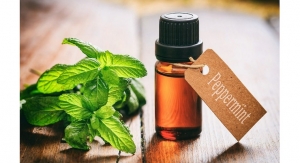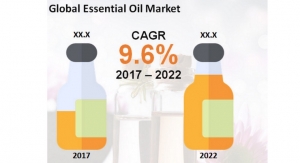Jamie Matusow, Editor-in-Chief , with Joanna Cosgrove, Contributing Editor11.02.18
Update: L Brands ranks at #8 on our latest report Top 20 Global Beauty Companies 2021.
L Brands is #14 on this year's list of Top Global Beauty Companies.
Below is a look at the company’s 2018 highlights, recent acquisitions, best-selling brands, and latest innovations.
Corporate Sales:
$12.6 billion
Beauty Sales (Cosmetics and Personal Care):
$4.2 billion (est.)
(FY 2017 Beauty Sales: $4.6 billion, est.)
Key Personnel
Major Products/Brands
New Products
Recent Changes at L Brands
In his annual address to shareholders, CEO Les Wexner openly admitted he was disappointed in the company’s 2017 performance, pointing to a 15% decline in adjusted operating income, and mixed results he attributed to growth at Bath & Body Works which was more than offset by declines at Victoria’s Secret and the company’s international segment.
Bath & Body Works products, which span the Bath & Body Works, White Barn and C.O. Bigelow brand names, sells its products online and at more than 1,600 Bath & Body Works company-owned stores in the U.S. and Canada, as well as 185 stores in more than 30 other countries operating under franchise, license and wholesale arrangements. Bath & Body Works International partners opened 26 net new Bath & Body Works stores in 2017, bringing the total in the Middle East, Latin America, Southeast Asia and Europe to 185, with another 50 additional store openings in the works for 2018.
Last year, Bath & Body Works continued to transition from a fragranced-based body care product brand to one that Wexner says offers a more “refined” product mix that “emphasizes a broader total body care point of view inclusive of healthy and natural ingredients and a strong home fragrance presence.” Sales at Bath & Body Works increased 8%, driven by a positive 2% comparable store sales increase and a 24% increase in sales in the direct channel. Operating income increased 5%.
The Victoria’s Secret fashion arm underwent its own overhaul in merchandising and design integration, as well as changes in leadership, but produced a disappointing performance. The Victoria’s Secret Beauty business, however, had a good year. Sales increased in the low-single digit range, and the merchandise margin rate increased. Wexner says customers are responding favorably to “a more edited assortment” of new merchandise that’s delivering some welcome momentum.
L Brands operates 29 company-owned Victoria’s Secret Beauty and Accessories stores in Greater China and expects to open approximately 10 more in 2018. Its partners opened six net new Victoria’s Secret Beauty and Accessories stores in 2017, bringing the total to 397. The new stores are located in local markets, airports and tourist destinations, and are focused on Victoria’s Secret branded beauty and accessory products. Looking forward, approximately 40 new Victoria’s Secret Beauty and Accessories stores are slated to open and 25 are due to close in 2018.
News of Note in 2018
L Brands reported that its 2018 Q2 operating income was $228.1 million, compared to $300.9 million last year, and net income was $99.0 million compared to $138.9 million last year. T
he company reported net sales of $2.984 billion for the quarter ended Aug. 4, 2018, compared to sales of $2.755 billion for the quarter ended July 29, 2017. Comparable sales for the 13 weeks ended Aug. 4, 2018, increased 3% compared to the 13 weeks ended Aug. 5, 2017.
Read Next: Mary Kay is #15
L Brands is #14 on this year's list of Top Global Beauty Companies.
Below is a look at the company’s 2018 highlights, recent acquisitions, best-selling brands, and latest innovations.
Corporate Sales:
$12.6 billion
Beauty Sales (Cosmetics and Personal Care):
$4.2 billion (est.)
(FY 2017 Beauty Sales: $4.6 billion, est.)
Key Personnel
- Leslie Wexner, chairman and chief executive officer
- Charles McGuigan, chief operating officer
- Stuart Burgdoerfer, chief financial officer and executive vice president
- Nicholas Coe, chief executive officer, Bath & Body Works
- Martin Waters, chief executive officer, international
Major Products/Brands
- Bath & Body Works, C.O. Bigelow, White Barn home fragrances
- Victoria’s Secret fine fragrances and cosmetics
New Products
- Bath & Body Works: Bergamot, Ylang Ylang,
- Peppermint and Patchouli 5-in-1 Essential Oil Mists,
- Essential Oil Body Lotions, 3-in-1 Aromatherapy Essential Oils;
- Soothing Oatmeal, Soothing Almond Milk, Illuminating Apple,
- Exfoliating Walnut, Rejuvenating Pumpkin Enzyme, Revitalizing Red Wine,
- Gentle Honey face and body skin care products;
- Hello hand sanitizers; Sweater Weather, Pumpkin Picking, Autumn Nights,
- Bonfire Bash and FreshWater fragrances and bath and body items;
- and Victoria’s Secret Beauty: Tease Rebel fragrance, Midnight Blooms line of mists and lotions.
Recent Changes at L Brands
In his annual address to shareholders, CEO Les Wexner openly admitted he was disappointed in the company’s 2017 performance, pointing to a 15% decline in adjusted operating income, and mixed results he attributed to growth at Bath & Body Works which was more than offset by declines at Victoria’s Secret and the company’s international segment.
Bath & Body Works products, which span the Bath & Body Works, White Barn and C.O. Bigelow brand names, sells its products online and at more than 1,600 Bath & Body Works company-owned stores in the U.S. and Canada, as well as 185 stores in more than 30 other countries operating under franchise, license and wholesale arrangements. Bath & Body Works International partners opened 26 net new Bath & Body Works stores in 2017, bringing the total in the Middle East, Latin America, Southeast Asia and Europe to 185, with another 50 additional store openings in the works for 2018.
Last year, Bath & Body Works continued to transition from a fragranced-based body care product brand to one that Wexner says offers a more “refined” product mix that “emphasizes a broader total body care point of view inclusive of healthy and natural ingredients and a strong home fragrance presence.” Sales at Bath & Body Works increased 8%, driven by a positive 2% comparable store sales increase and a 24% increase in sales in the direct channel. Operating income increased 5%.
The Victoria’s Secret fashion arm underwent its own overhaul in merchandising and design integration, as well as changes in leadership, but produced a disappointing performance. The Victoria’s Secret Beauty business, however, had a good year. Sales increased in the low-single digit range, and the merchandise margin rate increased. Wexner says customers are responding favorably to “a more edited assortment” of new merchandise that’s delivering some welcome momentum.
L Brands operates 29 company-owned Victoria’s Secret Beauty and Accessories stores in Greater China and expects to open approximately 10 more in 2018. Its partners opened six net new Victoria’s Secret Beauty and Accessories stores in 2017, bringing the total to 397. The new stores are located in local markets, airports and tourist destinations, and are focused on Victoria’s Secret branded beauty and accessory products. Looking forward, approximately 40 new Victoria’s Secret Beauty and Accessories stores are slated to open and 25 are due to close in 2018.
News of Note in 2018
L Brands reported that its 2018 Q2 operating income was $228.1 million, compared to $300.9 million last year, and net income was $99.0 million compared to $138.9 million last year. T
he company reported net sales of $2.984 billion for the quarter ended Aug. 4, 2018, compared to sales of $2.755 billion for the quarter ended July 29, 2017. Comparable sales for the 13 weeks ended Aug. 4, 2018, increased 3% compared to the 13 weeks ended Aug. 5, 2017.
Read Next: Mary Kay is #15









